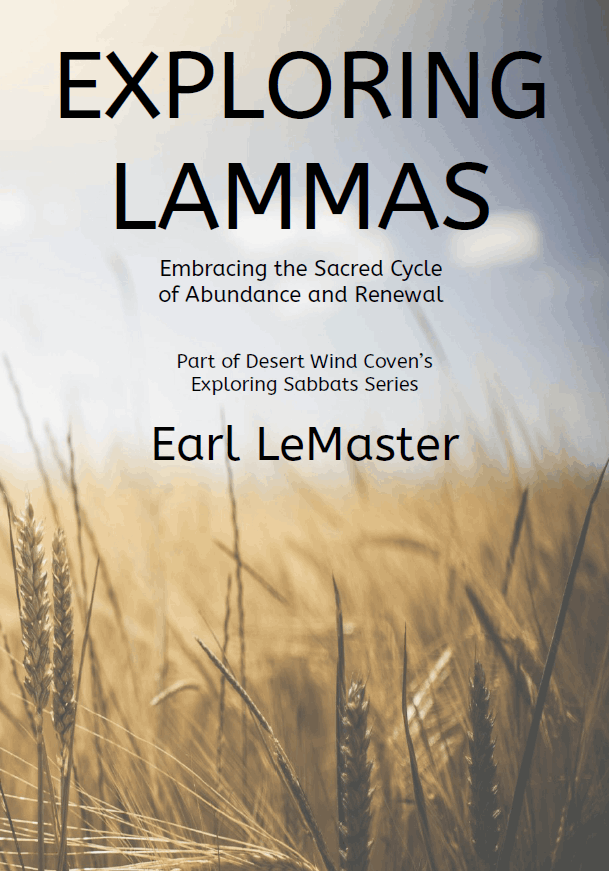Copyright © 2024 Gray Seal
Lughnasadh, also known as Lammas, is one of the ancient Celtic festivals that marks the turning of the seasons. Celebrated on August 1st, it is a festival steeped in rich folklore and tradition, heralding the onset of the harvest season. Named after the Celtic god Lugh, the festival is a vibrant testament to the agrarian roots of the Celtic peoples, combining elements of mythology, agriculture, and communal celebration.
Origins and Mythology
Lughnasadh is named in honor of Lugh, the god of light, craftsmanship, and skill in Celtic mythology. According to legend, Lugh established this festival in memory of his foster mother, Tailtiu, who died from exhaustion after clearing the plains of Ireland for agriculture. Tailtiu's efforts symbolize the hard work and sacrifice necessary for a bountiful harvest, and thus, Lughnasadh is both a time of gratitude and remembrance.
The festival's name, "Lammas," is derived from the Old English "hlafmaesse," meaning "loaf mass," highlighting the importance of bread in the celebration. This name reflects the Christianization of the festival, where the first loaves of bread made from the new harvest were brought to church to be blessed.
Traditional Celebrations
Lughnasadh was traditionally marked by a variety of customs that honored both the deities and the bounty of the land. Key elements of the celebration included:
Feasting and Communal Meals: Central to Lughnasadh is the sharing of food, particularly bread and other products of the first harvest. Communities would gather to feast on the new grains, vegetables, and fruits, symbolizing the earth's abundance.
Craftsmanship and Skill: In honor of Lugh's association with skill and artistry, contests and fairs showcasing talents in music, storytelling, crafting, and athletics were common. These gatherings allowed people to display their skills, reinforcing communal bonds and the value of craftsmanship.
Agricultural Rituals: Various rituals were performed to ensure a successful harvest. The cutting of the first corn, often fashioned into corn dolls or "Corn Mothers," was a significant act. These dolls were kept until the following spring to ensure the continuity of the harvest cycle.
Games and Sports: Athletic competitions, known as "Tailteann Games," were held in honor of Tailtiu. These games included running, wrestling, archery, and horse racing, reflecting the physical prowess and endurance valued by the Celts.
Bonfires and Dancing: Bonfires were lit to celebrate the light of Lugh, and people would dance around the fires, symbolizing the sun's power and the community's joy.
Folklore and Symbolism
Lughnasadh is imbued with rich folklore that varies across regions. In some traditions, it was believed that the spirit of the grain lived in the last sheaf of the harvest. This sheaf was often ceremonially cut and made into a figure, which was then kept until the next year's planting to ensure fertility and protection for the crops.
In Ireland, climbing hills and mountains was a common Lughnasadh activity, reflecting ancient pilgrimage traditions. Croagh Patrick, a mountain in County Mayo, saw such gatherings where people would climb to the summit to pay homage to Lugh and seek blessings for the harvest.
The symbolism of Lughnasadh is deeply tied to themes of life, death, and rebirth. The cutting of the first grain is a metaphor for sacrifice, representing the cycle of life that sustains the community. This act also symbolizes gratitude for the earth's bounty and recognition of the interconnectedness of all life.
Modern Observances
Today, Lughnasadh is still celebrated by modern Pagans, Wiccans, and those interested in Celtic spirituality. These contemporary observances often incorporate traditional practices, such as baking bread, holding feasts, and engaging in community activities that honor the spirit of the harvest.
Many modern festivals include reenactments of ancient games, craft fairs, and music, keeping the spirit of the original celebrations alive. These gatherings provide a way for people to connect with nature, their ancestors, and the cycles of the earth, fostering a sense of community and continuity.
Conclusion: Lughnasadh, or Lammas, is a festival rich in history and folklore, celebrating the first fruits of the harvest and the skills of the community. Rooted in Celtic mythology and agrarian tradition, it is a time of gratitude, remembrance, and communal joy. Whether through ancient rituals or modern festivities, Lughnasadh continues to remind us of the profound connection between humanity and the natural world.

